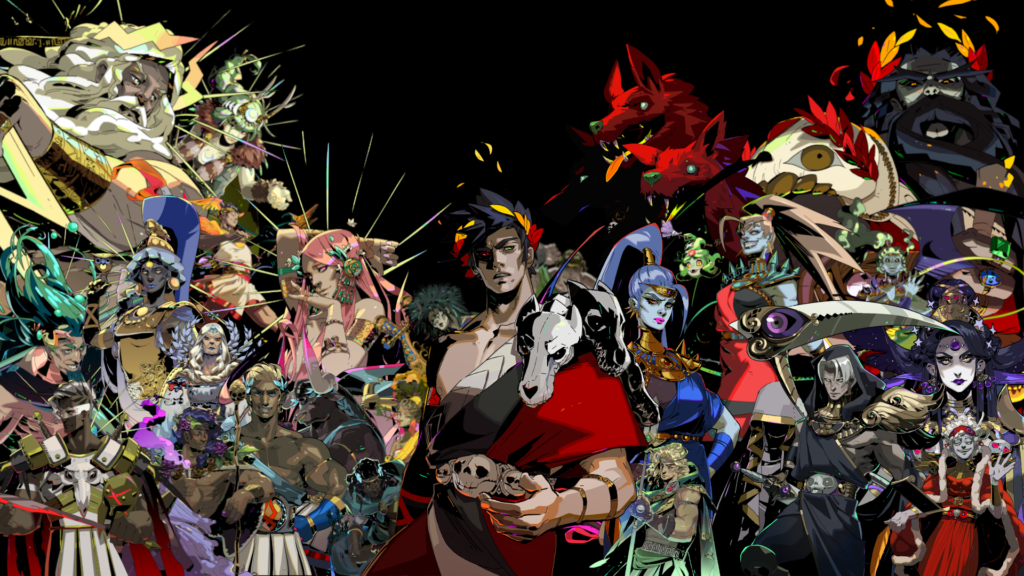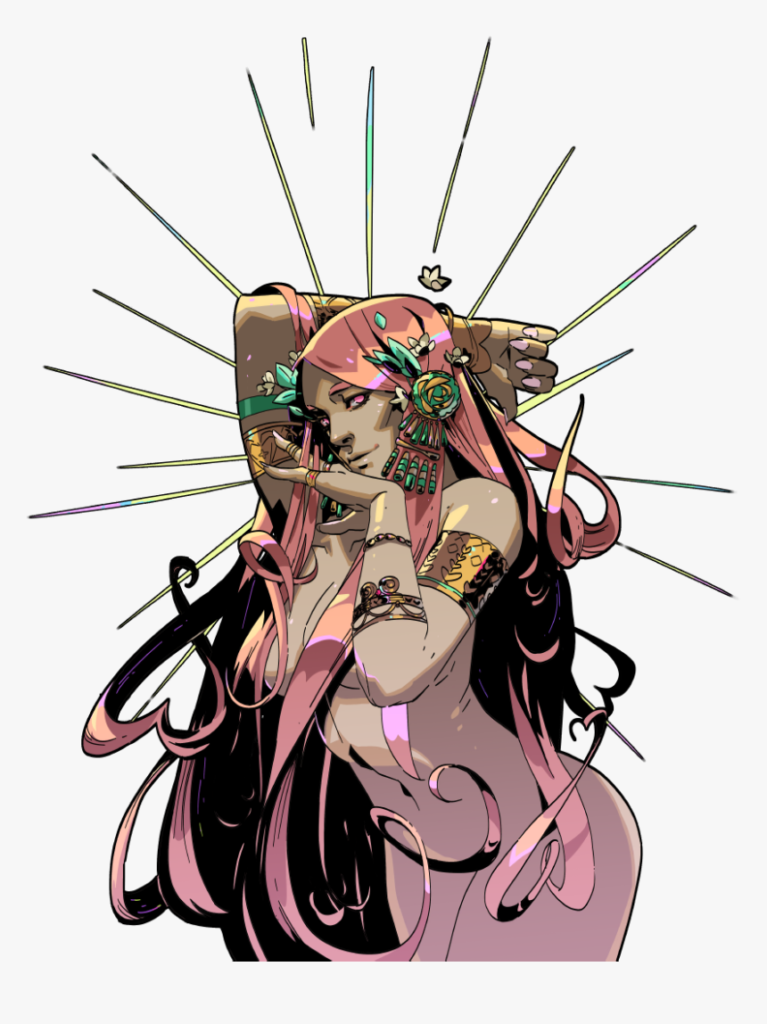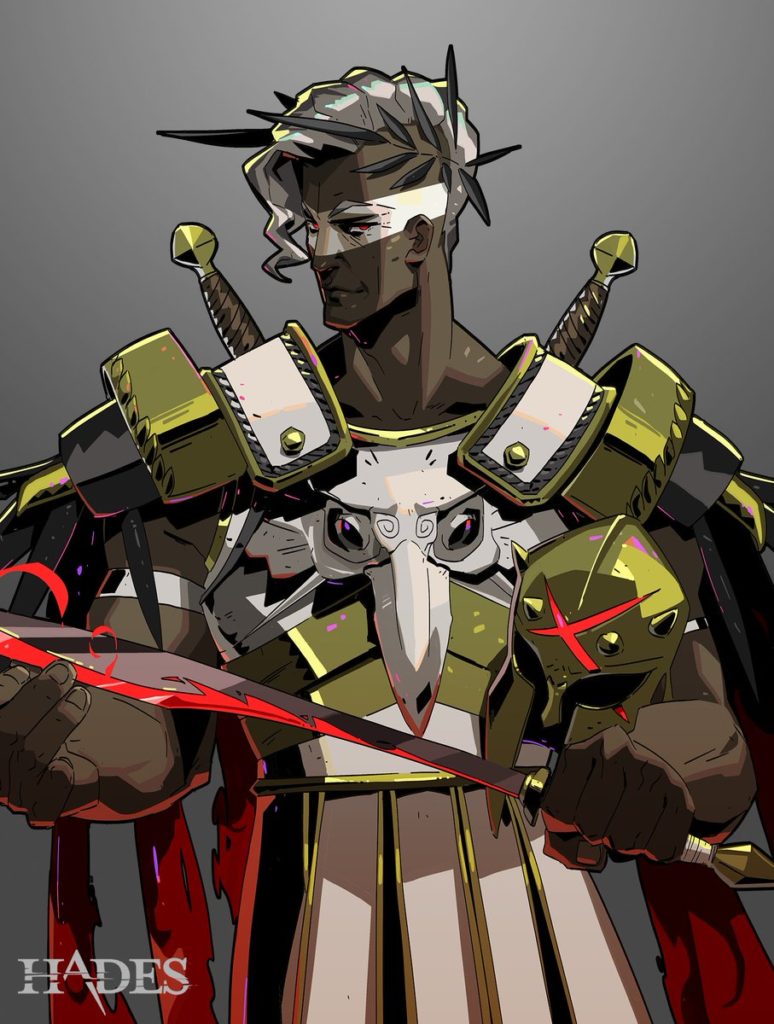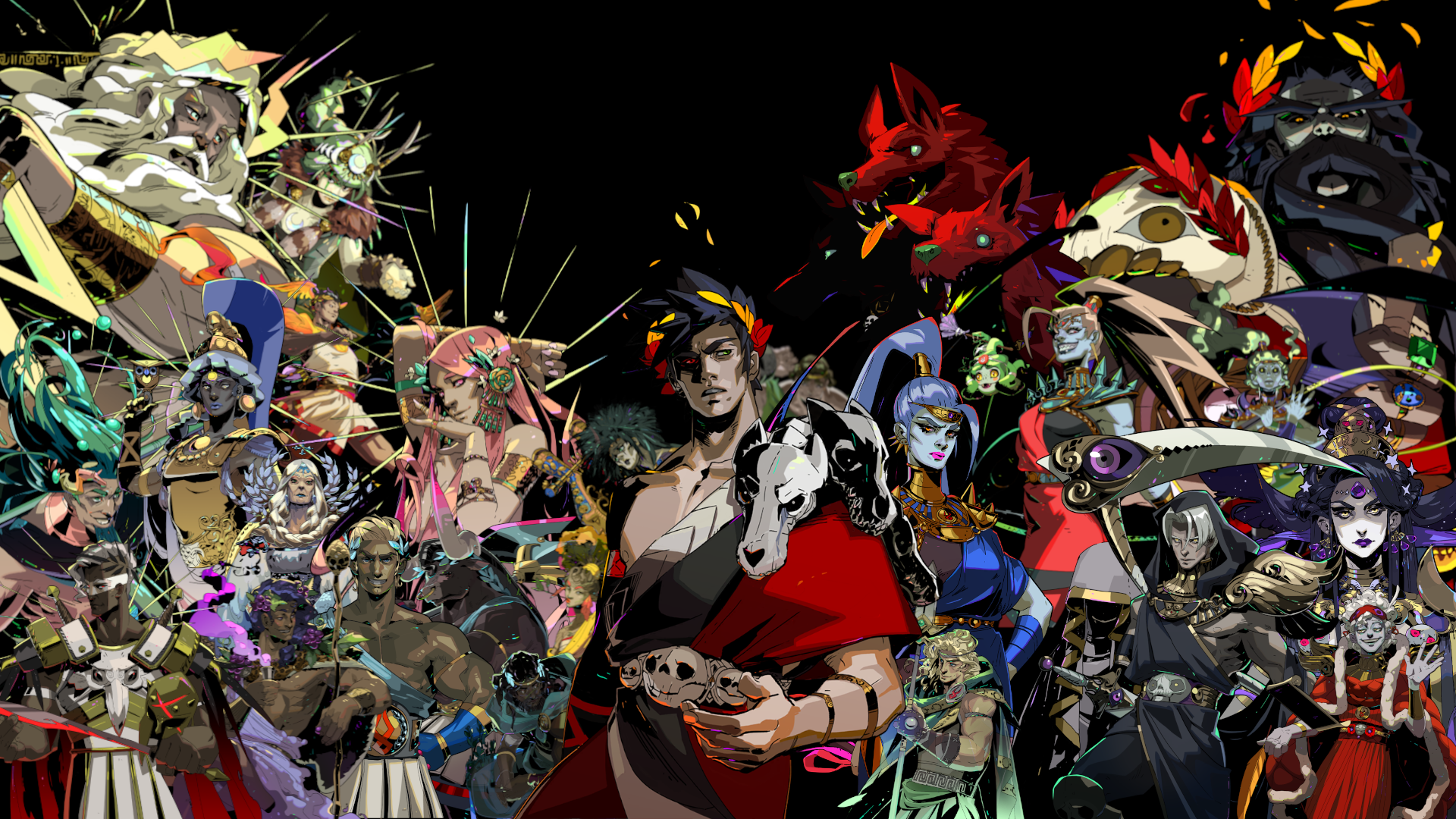
When given the choice on which Rogue-lite to play for Week 2 I chose Hades pretty much exclusively for the fact I distinctly remember people gushing to me about how good the character designs in Hades were and as someone who is usually drawn to games I find visually appealing I had to give it a try. In my 5 hours of playing I was blown back by just how much I loved the character designs. The amazing artists at SuperGiant who worked on Hades did an amazing job of creating designs that both subvert expectations and remain faithful to the source material.
The character designs in Hades are not your typical depictions of Greek gods and this subversion of expectations is what makes these character designs feel so interesting and refreshing. Take for example one of my favorite designs Artemis. In most depictions, whether it be a marble statue or this beautiful painting by Guillaume Seignac Artemis is usually shown as a woman with idealized but very natural human features wearing a chiton which was the typical fashion in ancient Greece, and wielding a bow. In contrast, Artemis in Hades is depicted with unnatural features like her pale green hair with deer antlers and she trades out the traditional chiton in favor of donning a shorter more mobile dress and a forest green cape trimmed with furs. Despite all these differences, Artemis in Hades still effectively communicates the idea of being the Goddess of the hunt and moon. She wears moons on her head and chest and her outfit with its woodsy elements just feels right for a goddess who is going out on the hunt. Hades’s Artemis utilizes surprising elements like pale green hair and animalistic features while still remaining faithful to Greek mythology with the moon motifs and huntress garb. This design might not be the most traditional depiction of the goddess, but it captures the elements of Artemis while subverting expectations to create a design that feels unique and keeps the viewer intrigued.

The more I look at Artemis’s design the more little details I catch that nod towards the goddess’s designation or character and this use of little details to make the characters more visually interesting is something the artists at Hades did an amazing job with for all the other various gods, heroes, and monsters in the game.
Another great example of design would be Aphrodite. One would think there is very little to mention considering she is not wearing anything and has very strategically drawn hair. Oftentimes you see designs considered “sexy” to be seen as bad design or just fanservice and I find in video games people complain about designs (usually female designs) that throw away all practicality in favor of sexuality. I won’t comment on those types of designs in other games, but for me, I find that Hades is able to show that sexy designs are not necessarily bad designs. With Aphrodite, it makes sense for her design to be the way it is because she is the Goddess of Love. She’s meant to be seductive, additionally, this design stays faithful to many famous depictions of Aphrodite such as The Birth of Venus by Sandro Boticelli with the flowing hair and lack of clothes. Aphrodite in Hades still manages to subvert expectations with her pink hair and eyes. These features work well since pink is so commonly associated with love, but you do not often see such an unnatural choice of hair color and eye color in other depictions of aphrodite in media such as in the MOBA Smite which goes for the blonde hair blue eyes look. Hades’s choice to use these more unnatural features both highlights that Aphrodite is a goddess and not human and makes the design feel so much more visually interesting while still being fitting for the Goddess of Love.

Aphrodite is not the only character design that leans in towards attractive features just look at most of the other gods with their muscular bodies and traditionally attractive looks. This beauty many of the gods have makes sense as they are gods so they are meant to be idealized and ancient greek depictions of gods definitely did not go towards modesty so having attractive character designs makes sense considering how the gods were historically depicted. Creative director at Supergiant Greg Kasavin echoes this sentiment in an email to Kotaku where he writes, “the gods in Hades are ‘friggin’ hot’ as part of our commitment to honoring the source material.” What I find so great about Hades’s character design is that their attractive designs are unapologetic about being attractive and still have all these details that make the designs go beyond being attractive for the sake of being attractive. Essentially, Hades shows that hot character design does not equal bad character design.
Another noticeable aspect of the character designs in Hades that I find so interesting is that they are diverse. Unlike the usual depictions of the Greek Gods, the Gods in Hades are not all euro-centric in features. Some may question whether making these characters diverse takes away from the game’s faithfulness to greek mythology or whether the diversity is even necessary. However, an interesting point brought up in that same email to Kotaku I quoted earlier is when Greg Kasavin says, “They’re called the Greek gods because they were worshiped in ancient Greece, not because they themselves are ethnically Greek.” I found this to be a great explanation for how there can be designs that might not look like Ancient Greeks such as Ares or Athena in the game but still remain faithful to the source material because they do not have to look Greek to be Greek gods. Diversity might not be completely necessary for modern video game design but I find the diverse depictions of the gods to be refreshing while also making sense and not taking away from the source material.

Considering I just went on a long rant about the character design in Hades and what makes it so great it begs the question why is character design such an important part of Hades? Why should it matter that the characters look visually dynamic and interesting? Well in my opinion the amazing character design is essential to Hades because it is what draws many people into being interested in interacting with the various characters and story. If the characters were not well designed it would be hard to get people interested in interacting with the character through dialogue which is necessary for accessing the story elements of the game. You don’t have to form relationships with all the characters to make it through the underworld but the way the characters look makes you want to. Part of what makes Hades great and makes it such an innovative take on the Rogue-like genre is that it encourages this discovery of a story outside of your typical rogue-like gameplay and makes failure necessary in getting to know the rich story and characters of the game. In my opinion, without great character designs, many players would not be motivated to listen to character dialogue and gift nectar to characters outside of just getting that first trinket to help in underworld runs. But the visually interesting and beautiful character designs are what entice many to interact deeper with the story of Hades. I think Hades is a great example of how stellar character designs and art can really make all the difference in designing a game!


I really like your hypothesis that the creative and diverse character designs in the game contribute to a user’s experience as a Roguelite game with a narrative force behind it, since the story is very much driven by the various characters that you can meet and encounter as the game progresses and half the fun is seeing how they are depicted. For many, the Greek gods are a common and frequently depicted group in popular media thanks to franchises like Percy Jackson or Disney’s Hercules, so it becomes a fun and interesting experience to see how Hades combines masterful art direction and a unique style with their diverse character designs. During my own playthrough, I found myself more excited to meet the gods and see their sprites rather than receive the benefit of their boons– an excitement that progressed to wanting to hear the unique dialogues the more Zagreus encountered them. This went hand and hand with the roguelike genre of failure premeditating advancement in the game– I was upset to fail, but excited at the possibilities of new characters presented to me going forward.
Additionally, you note that character design is an important factor in designing a game. I agree entirely– if not for Hades’ unique characters and the art, stories, and discourse they spawned on the internet, I’m not sure the game would have reached the heights that it has now. It’s certainly something that sets it apart from other games in that it has a captivating protagonist and a cast of interesting, stylized characters that have infinite potential for fanart and recreations.